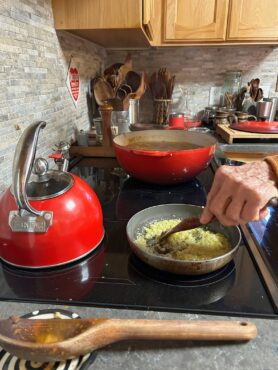
Induction cooktops are taking the food-preparation appliance market by storm. Nearly every cooktop manufacturer — from the high-end La Cornue range models that cost thousands of dollars, to small portable single-burners for RVs and restaurants selling for only $100 or so — is available through appliance showrooms and online.
Offering a safe and energy-efficient way to heat foods, induction cooktops are appealing to a broad range of cooks. Similar to gas, induction heats rapidly when turned onto a high setting, and stops cooking almost immediately when it is turned off. Unlike gas, there are no fumes emitted into the air of the room. As Washington state has issued a moratorium on the installation of new gas appliances, the appeal of induction cooktops and ranges may be of interest to builders and home remodelers alike.
Induction cooktops resemble those on a modern, electric, glass-top range that features a smooth, sleek, black surface. The surface is easy to clean and foods don’t cook onto it because the surface of the induction cooktop never gets hot. Although the glass surface can be scratched by moving rough bottom pans over it and cracked by dropping a heavy object onto it, it’s engineered to resist damage with normal use.
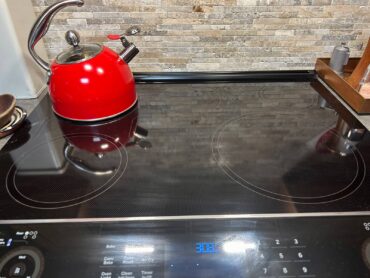
A minor drawback to an induction cooktop is the necessity of using a magnetic pan. As the cooking surface itself doesn’t heat, it requires the use of cookware made of ferrous metals on which a magnet will stick, such as iron or steel. Adapter plates made of ferrous metals can be placed on the induction burner to allow a nonferrous pan to heat. Most induction range manufacturers don’t recommend the use of these plates, as extensive use can damage the cooktop.
Although it seems like modern technology, the use of magnetism for heating a vessel was actually invented in the early 1900s. Information in the GE Profile Induction Range manual states, “Magnetic fields induce a small current in a pan, which acts like a resistor, which then produces heat, like a radiant coil. The cooking surface itself does not heat as heat is produced in the cooking vessel and is not generated until the vessel is placed on the cooking surface.
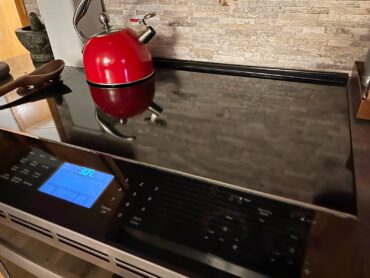
“When the element is activated, the pan begins to heat immediately and in turn heats the contents of the pan, enough for the element to detect the pan and be able to deliver full power. The cooktop will not operate if a very small steel or iron utensil, such as a steel spatula, cooking spoon, knife or other small utensil, is placed on the cooking surface when the unit is turned on.”
As the heat is generated via an electromagnetic field under a glass surface, there is even an induction cooktop that sits under a porcelain surface or a natural stone surface. This product is available from a limited number of high-end tile and stone fabricators, but may become more popular in the future.
Using Your Induction Cooktop
Pots and pans that are suitable for cooking on an induction cooktop are cast iron, enamel clad and multilayer stainless steel. Many cookware manufacturers are now labeling their products as suitable for all cooking surfaces. When purchasing cookware for a glass cooking surface, the consumer would be well advised to shop for pans with smooth bottoms and a heavy bottom. There is a bit of a learning curve while getting used to cooking on an induction surface, and food can burn quickly in a thin bottom pan.
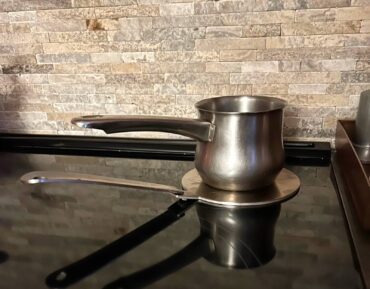
Most induction cooking surfaces are totally smooth and have a digital control panel. There is usually a lock that has to be activated before a burner can be turned on. Some units have a sound indicator to let you know if the pan is properly placed on the burner. It’s important to use a pan that fits about the same diameter as the burner, and some cooktops will even indicate minimum pan sizes for specific burners.
Preheating a pan for searing is much quicker on an induction burner, so be vigilant when doing so. Bringing a pot of water to the boil is much faster than on a gas or conventional electric stove, which saves time as well as money. Most cooktops are also equipped with a temperature-sensing device that allows cooking at high temperatures, but also prevents overheating or meltdown of an empty pan.
When a pan has been removed from a burner, there is no residual heat, which serves as a safety feature for children or someone who may forget to turn a burner off. Another advantage to induction cooking is that little or no heat escapes into the kitchen, as the pan itself is generating the heat inside and the heat is confined to the contents of the pan. Many cooktops also have a bridging feature, which allows the use of a stovetop griddle to extend over the surface of two burners.
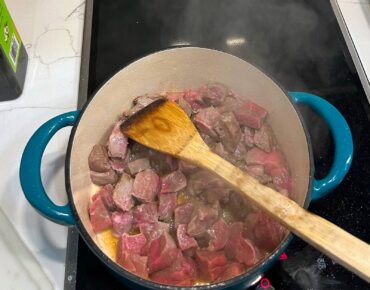
Versatile Choices
Induction cooktops are available as standalone drop-ins, as cooktops on slide-in ranges or as portable one- and two-burner units. The portable units are becoming popular in RVs, where they can be used as the main cooking device inside as well as taken outside.
A portable unit plugs into a typical electric socket and can be used for table-side cooking in a restaurant; it’s also ideal for a small kitchenette area in a home. Portable units are also handy for use on a buffet table to keep foods warm while entertaining. Many large home kitchens are being outfitted with a standard four- or six-burner gas or electric cooktop along with a two-burner induction unit.
The speed, safety, efficient energy use, lack of contaminants in the air and the ease of cleaning a smooth glass surface are all positive reasons why induction cooktops may soon be the most popular choice for the home kitchen.





























